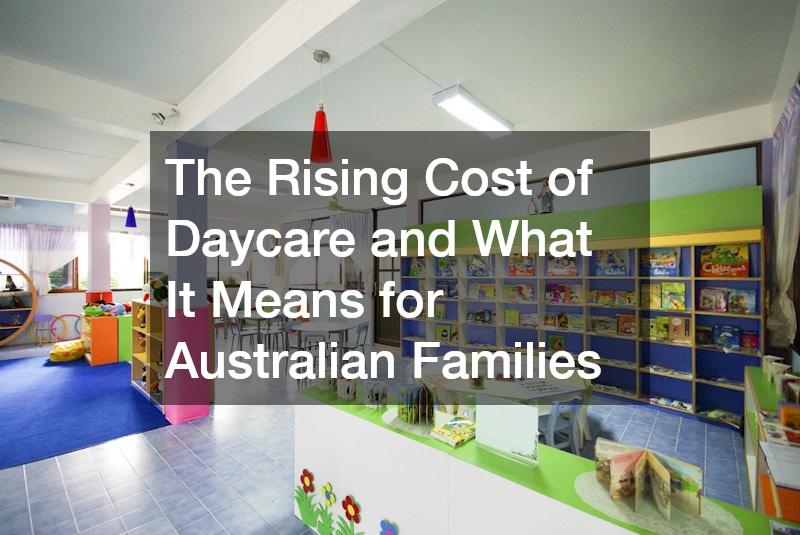Across Australia, the cost of raising children continues to climb, and one of the most significant contributors to family expenses is daycare. Once a manageable part of the household budget, childcare has become a financial pressure point for many families juggling work commitments, household responsibilities and the developmental needs of their children. The implications go far beyond mere affordability; the rising cost is reshaping decisions about careers, family planning and even where Australians choose to live.
A Financial Strain on the Average Household
For most Australian families, both parents are now active participants in the workforce. Dual incomes are often necessary to cover basic living costs, from mortgage repayments to groceries. However, the increasing cost of nursery school is beginning to erode the financial advantages of having both parents employed. Some families now find themselves in the difficult position of working primarily to cover the cost of childcare, a dilemma that raises questions about whether the system is sustainable.
According to data from the Australian Bureau of Statistics, average out-of-pocket expenses for childcare have grown faster than inflation over the past decade. While government subsidies such as the Child Care Subsidy (CCS) aim to relieve pressure, many middle-income families still face significant costs due to the subsidy’s tapering structure. This has led to a “childcare cliff” where earning slightly more money results in a disproportionate loss of subsidy, making extra work hours financially unrewarding.
Regional Disparities & Access Gaps
Cost isn’t the only issue. In many parts of Australia, particularly rural and regional areas, access to childcare services is limited. The scarcity of qualified providers in less populated communities often forces families to drive long distances or remain on extended waiting lists. Even in major cities, demand frequently outpaces availability, with popular centres booked out months in advance. This imbalance not only adds logistical strain but also places upward pressure on fees.
In response, some local councils and community organisations have attempted to expand childcare options, but growth is slow. The need for highly trained staff, strict regulatory compliance and safe infrastructure all contribute to the difficulty of opening new centres, especially in lower-income areas where profit margins are slimmer.
Impacts on Women & Workforce Participation
The rising cost of daycare has disproportionately affected women, who still shoulder the majority of unpaid caregiving in Australian households. When childcare becomes too expensive, many mothers reduce their working hours or leave the workforce altogether, not out of choice but financial necessity. This dynamic widens the gender pay gap and limits long-term earning potential for women, especially those in early or mid-career stages.
Furthermore, the pressure to leave work temporarily can have lasting impacts on professional development and superannuation savings. It reinforces outdated gender roles and slows progress toward workplace equality. Although parental leave policies have improved in recent years, they don’t address the critical years that follow infancy when quality early education remains crucial.
Developmental Concerns & the Quality Equation
Childcare is more than just supervision—it plays a vital role in the early development of children. High-quality care fosters social skills, emotional regulation, language development and early literacy. However, when costs rise, quality can suffer. Some families, unable to afford premium centres, may settle for more affordable options with larger class sizes or less qualified staff.
This disparity in early childhood education can contribute to unequal outcomes by the time children reach school age. A child from a low-income household may already be behind their peers due to limited access to enriching early learning environments. Bridging this gap requires a coordinated effort to ensure quality care is affordable and universally accessible.
What Can Be Done?
Addressing the nursery school cost crisis requires structural reform, not short-term fixes. Increasing the CCS threshold or adjusting tapering rules could help more families keep more of their income. Greater investment in early childhood infrastructure, particularly in regional areas, is also essential to expand access. More importantly, the sector needs support to retain qualified staff—without this, even well-funded centres can struggle to deliver quality care.
A Broader Cultural Conversation

Beyond economics and logistics, Australia must engage in a broader conversation about the role of daycare in modern life. It is no longer a luxury or optional extra—it is a necessity for functioning families and a robust economy. Recognising childcare as essential infrastructure—on par with schools and hospitals—would be a cultural shift that reflects the realities of contemporary parenting.
For Australian families, the cost of childcare is more than a budget line item. It influences career decisions, gender equality, child development and the nation’s future prosperity. As costs continue to rise, so too must public awareness and policy ambition. Investing in accessible, affordable and high-quality childcare isn’t just support for today’s families—it’s a foundation for the next generation.



